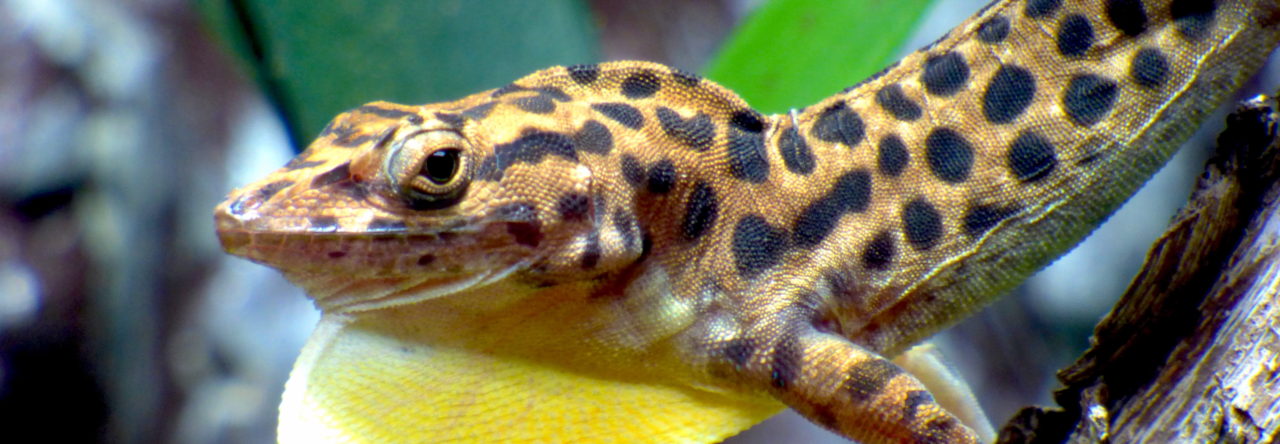
Brown anole with and without crest shown at the whole-animal (left) and histological (right) level. Photo from Ademi and Rand poster.
If you’ve ever been around brown anoles, you know that the males can be pretty aggressive. Part of that aggression involves the enlargement of a crest along the neck and back. The crest is caused by fluid rapidly rushing into the tissue of the crest. How this works has been discussed here before, but Matt Rand’s research group at Carleton College continues to try to unravel what hormonal pathways are responsible for crest formation. Ademi and Rand used an experimental approach to discover what molecular receptors are activated to cause crest formation. Body-wide and local injection of a variety of chemicals and drugs gave some tantalizing clues as to how it works.

Local injections to stimulate cAMP activity caused crest formation locally (top), whereas body-wide injection caused whole-crest formation (bottom). Photo from Ademi and Rand poster.
They found after several inhibitory and stimulatory drug manipulations that crest erection is likely stimulated by epinephrine acting on a Beta-2 like adrenergic receptor that stimulates cyclic AMP (cAMP) activity to cause vasodilation (enlarging of blood vessels) and fluid entrance into the crest. This activity that starts with the B2-adrenergic receptor is essentially the same function as that seen in mammalian circulatory systems, including us. They also stimulated cAMP activity without stimulating the B2-like adrenergic receptor and found similar results. You can see how dramatic the response was below, where they used local injection to cause crest formation only at the site of injection! The use of epinephrine binding to a B2-like adrenergic receptor as the molecule of communication makes the rapid time-course of crest formation make sense. There are still some unknown aspects as to how the vasodilation mechanistically causes the fluid release in the crest, but they are actively studying it.
- Exercise and the Immune System in Green Anoles - January 6, 2021
- Exercise Can Kill You (If You’re an Anole)! - May 10, 2019
- Leptin Mediates Tradeoffs in Green Anoles - February 2, 2019


Rebecca
I had never seen an anole with a crest until I saw this one yesterday! Thanks for this article explaining what might cause it. It was very educational.